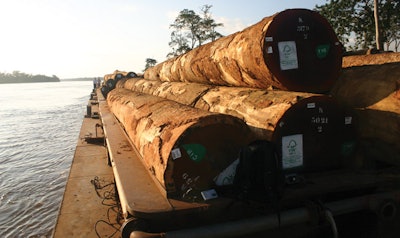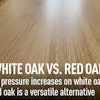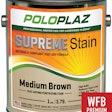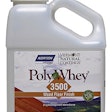

In a perfect world, hardwood flooring would materialize with no damage or loss to the world's forests. Until that day, many manufacturers are keen to present clients with a product that is as close to "green" as possible. Certification by the Forest Stewardship Council (FSC) is one way to assuage customers' eco-consciences and gain a step up on competitors. It can also open doors to projects that require the FSC stamp of approval.
There is a critique that the FSC is merely a bogus green tax-a hoop to jump through in order to please eco-minded lawmakers. However, considering the extensive criteria manufacturers must meet in order to get certification, there is no denying the third-party oversight is indeed beneficial in protecting a limited resource that every hardwood supplier relies upon. Attaining accreditation may not be simple or convenient, but viewed through a long-term lens, sustaining the industry as a whole (not to mention the planet) justifies the effort.
What is FSC?
The Forest Stewardship Council is a global, non-profit organization that sets standards and means of evaluation for timber and non-timber forest products. The council aims to help businesses and consumers make informed choices about the materials they buy and protect the natural resources of the future.
The FSC touts a lofty set of principles that include prevention of forest and natural habitat conversion, protection of indigenous peoples' and international workers' rights, and the prohibition of hazardous chemicals. Upholding these standards requires a great deal of oversight and control over the product supply chain. The organization uses a "Chain of Custody" program to trace and account for FSC-certified product throughout every step of a supplier's practice-from sourcing raw material to final sale deliveries.
The Requirements
Members adhering to the FSC's Chain of Custody guidelines are required to exercise extremely tight control over their entire supply chain. Requirements include training sales and shipping staff on FSC procedure, keeping a special filing system specifically for FSC transactions and maintaining these records for at least five years. Accredited companies must control the amount of wood that is cut down (or harvested, in the case of bamboo) and the time of year logging can occur.
FSC-certified materials require distinct packaging and must always be kept separate from other products. All records and paperwork dealing with FSC-sanctioned product must be easily tracked and bear the company's certificate number. This paper trail must be accessible and stored in a separate filing system from other business records. Intensive, annual six-week audits ensure each transaction and every step of the process is on par with FSC criteria.
The Payoff
Fulfilling all the requirements can be labor-intensive and costly, but many companies find the payoff justifiable. Eco-friendly options can be leveraged to gain a step up on competition and appeal to customers' environmental consciences. After all, who wouldn't want to save the planet? Businesses with FSC-certified materials have the right to advertise using the FSC name. When added to packaging, websites, emails and marketing materials, the increasingly recognizable logo serves as the mark of a reliable, green business.
Demand for FSC-certified building materials has risen as more architects and developers aim for LEED accreditation on construction projects. Federal tax benefits have also helped fuel this green growth spurt. According to McGraw-Hill Construction, by 2013 green building is expected to represent 25 percent of all commercial and institutional building starts and 20 percent of residential construction. That projection is up from 2 percent in 2005. Offering properly certified green materials may be what gives your company the edge over another supplier.
True, the wood products your company provides may be just as environmentally sound as material bearing the FSC seal, just as foods without a "USDA Organic" sticker may very well have been grown without a trace of pesticide. Customers can still be taught to accept a product's sustainability based on a supplier's word alone. However, a third-party label tells the story at a glance and can be beneficial in raising general awareness. In the end, it simply depends on how important to your buyer that certification is.
RPP: Creating Steps to FSC
Because many wood flooring manufacturers are sourcing American renewable forest supplies but find the road to FSC is complex, NWFA has worked with FSC to create the NWFA Responsible Procurement Program (RPP). This program is designed for those manufacturers who get their supplies from U.S. renewing forests that may or may not currently be FSC-certified. RPP allows NWFA members to differentiate their products by providing verification of renewable sourcing through the use of a logo to illustrate responsible sourcing of raw materials. Once verified via audit, an RPP manufacturer is on a tiered step-by-step timeline to becoming FSC-certified. For more information, go to www.nwfa.org.































